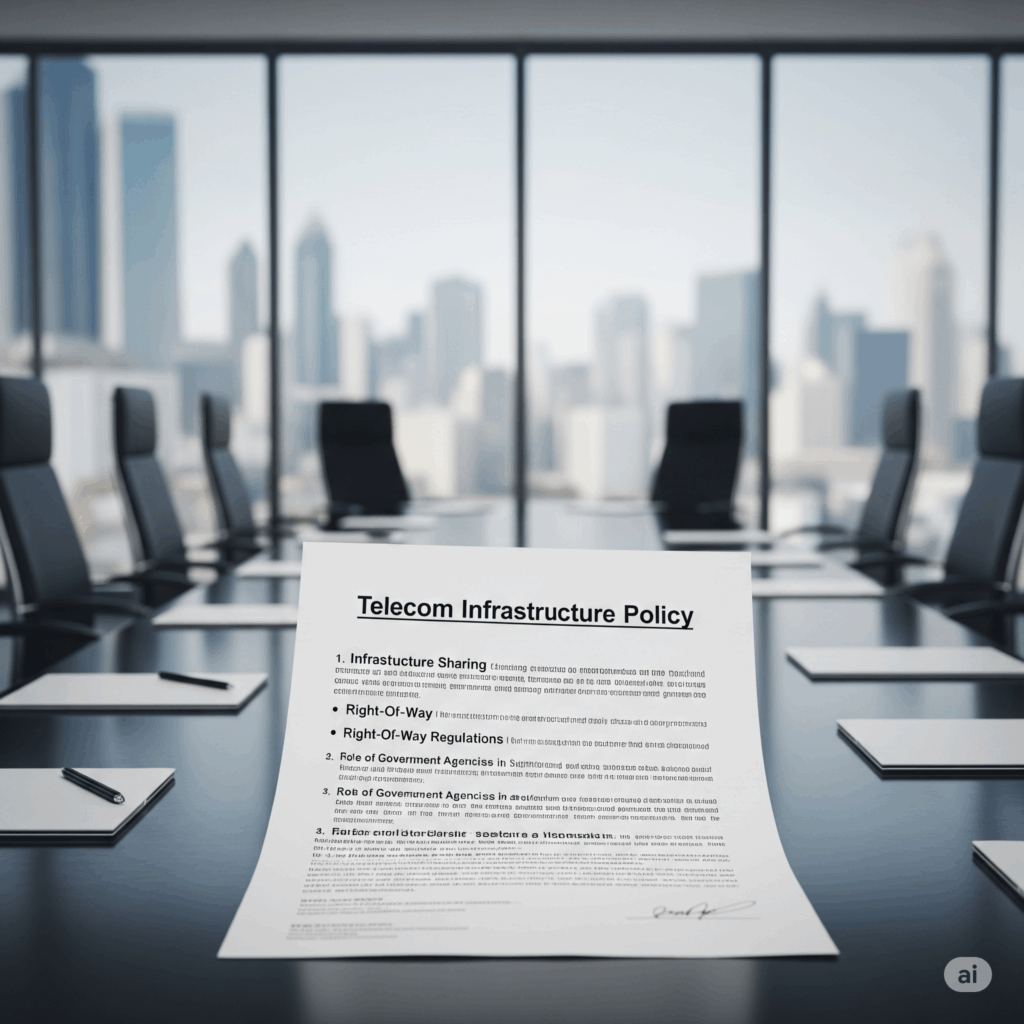Telecom Infrastructure Policy (ટેલિકોમ ઈન્ફ્રાસ્ટ્રક્ચર પોલિસી)

 Gujarat Telecom Infrastructure Policy 2022
Gujarat Telecom Infrastructure Policy 2022
- Introduced by the Gujarat Government under the Science & Technology Department, this policy allows single-window online clearances for both underground (fiber) and overground (towers) telecom infrastructure, with permissions promised within 60 days.
- Aimed at accelerating 5G rollout and expanding broadband to villages—targeting 512 unconnected villages.
- Fees set at ₹10,000 per tower application and ₹1,000/km for optical fiber deployment.
Industry Support:
COAI applauded the policy, noting its support for modern infrastructure like small cells, in-building solutions, and capacity upgrades, aligning with national missions such as National Broadband Mission and GatiShakti.
 National Telecom Policy & RoW Reforms
National Telecom Policy & RoW Reforms
National Telecom Policy (NTP) 2025 Goals:
- Achieve universal access to affordable connectivity.
- Double telecom product exports and create 1 million jobs by 2030, backed by ₹1.5 lakh crore annual investment .
- Ensure 100% 4G coverage and 90% 5G coverage, plus extensive fiberization at the village level.
- Integrate terrestrial and satellite networks (Starlink, Jio-SES, Kuiper, etc.) to reach remote areas.
Right of Way (RoW) Simplification:
- Central RoW rule mandates (under the 2023 Telecom Act) states to align by Jan 2025 with fair fees and time-bound clearances.
- However, 13 states still lag in implementation, causing delays in 4G/5G rollout.
 National Broadband Mission 2.0 (2025–30)
National Broadband Mission 2.0 (2025–30)
Launched on January 17, 2025:
- Expand fiber connectivity to 270,000 villages and reach 90% of anchor institutions with high-speed broadband by 2030.
- Halve RoW disposal times—from 60 to 30 days.
- Promote sustainable energy in 30% of mobile towers, geo-tag telecom infrastructure for disaster resilience .
- Build one million public Wi-Fi hotspots and integrate CBuD app protections for underground cables.
 Satellite Connectivity & Spectrum Policy
Satellite Connectivity & Spectrum Policy
- TRAI recommends a 5-year spectrum allocation (extendable by 2 years) for satellite broadband at 4% of AGR, plus ₹500 per urban user fee.
- India opts for administrative allocation rather than auctions, easing entry for players like Starlink and Amazon Kuiper, in response to tensions between Mukesh Ambani’s Jio and Elon Musk.
 Boosting Domestic Manufacturing & Resilience
Boosting Domestic Manufacturing & Resilience
- The PLI scheme for telecom gear allocated ₹12,195 crore, with 42 firms committed; yet only half (~21) have received payouts totaling ₹1,162 crore by FY25.
- Efforts to promote domestic manufacturing extend to pushing in-building solutions at airports and a disaster-resilient telecom framework.
 Gujarat’s Connectivity Surge
Gujarat’s Connectivity Surge
- Gujarat added 830,000 mobile subscribers between Dec 2024 and April 2025—bringing its total to 65.7 million—thanks to expanded rural infrastructure and affordable plans.
 Key Takeaways
Key Takeaways
| Policy Segment | Key Benefit |
|---|---|
| Gujarat Policy | Faster tower/fiber rollout in urban and rural areas. |
| NTP 2025 | Broad coverage, export growth, jobs, satellite integration. |
| RoW Reforms | Faster infrastructure deployment (aim: 30-day clearance). |
| Broadband Mission 2.0 | Massive fiber expansion and public Wi-Fi deployment. |
| Satellite Spectrum | Opens door for satellite internet, especially rural. |
| PLI Scheme | Encourages local telecom equipment production. |
 Final Thoughts
Final Thoughts
India’s evolving telecom infrastructure policy is comprehensive—spanning state-level streamlining, national regulation, broadband expansion, satellite inclusion, and manufacturing push. Gujarat’s efforts sync well with central goals, accelerating 4G/5G rollout and fiber connectivity. Effective RoW implementation and PLI uptake will be critical to meeting these ambitious targets by 2030.
